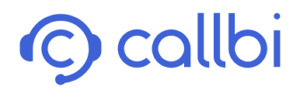Transforming The Way You Assess The Success Of Your Operations
Many businesses stick religiously to gut feelings when it comes to KPI measurement. And for decades contact centre managers have relied on traditional methods to gauge KPIs.
The problem? It’s wildly inaccurate, outdated, and it’s costing you.
Over the last decade, speech analytics has transformed contact centre operations. It ushered in a new era of KPI measurement, offering a more efficient, data-driven, and insightful approach to evaluating performance.
In this blog, we compare traditional KPI measurement methods and the innovative use of speech analytics. We also analyse the benefits of this approach and how it addresses the long-standing pain points that contact centre managers grapple with every day.
Traditional KPI Measurement in Contact Centers
Traditionally, measuring KPIs in contact centres was a labour-intensive and often error-prone process that involved:
1. Manual Data Collection
Contact centre managers had to sift through a multitude of call logs, emails, chat transcripts, and customer interactions manually. This process not only consumed valuable time but was also prone to human error, casting doubt on the accuracy of the collected data.
2. Limited Insights
The traditional methods provided only a superficial understanding of what transpired within the contact centre. Managers often found themselves with an incomplete view of agent performance and customer interactions, which hindered their decision-making.
3. Incomplete Feedback
Due to the periodic nature of performance reviews and limited data availability, feedback to agents and teams was often fragmented and lacked the details necessary for meaningful improvement. Agents were left in the dark about specific areas requiring refinement leading to uncertainty, frustration, lower motivation, and reduced job satisfaction.
4. Reactive Approach
Managers using traditional KPI measurement methods were often in a reactive mode. They addressed issues and bottlenecks after they had already occurred, leading to suboptimal customer experiences and operational inefficiencies.
5. Missed Performance Improvements
Limited insights and delayed feedback cycles meant that opportunities for agent and team performance improvements were frequently overlooked. Contact centres struggled to adapt swiftly to changing customer demands.
6. Inefficient Resource Allocation
The absence of accurate, real-time data made resource allocation a daunting task. Overstaffing during slow periods and understaffing during peak times resulted in operational inefficiencies and diminished customer satisfaction.
The New Way: Speech Analytics for KPI Measurement
Speech analytics technology represents a paradigm shift in the measurement of KPIs within contact centres:
1. Automated Data Collection
Speech analytics automates the data collection process by capturing and analyzing customer interactions in real time. It surpasses traditional methods by evaluating speech patterns, sentiment, keywords, and other relevant data, providing a holistic view of interactions. Research shows that speech analytics can process thousands of customer interactions within minutes, a feat that would take hours or even days using manual methods.
2. Deep Insights
Leveraging advanced algorithms and machine learning, speech analytics offers profound insights into customer-agent interactions. Research indicates that speech analytics can detect sentiment with an accuracy rate of over 90%, enabling contact centre managers to identify trends and areas where agents excel or require improvement.
3. Continuous Feedback
Speech analytics establishes continuous feedback loops, enabling contact centre managers to offer timely guidance and support to agents. This leads to ongoing performance enhancements, with data-driven and actionable feedback, addressing specific areas for improvement. Organisations using speech analytics experience a 58% improvement in agent performance and a 68% increase in customer satisfaction.
4. Proactive Approach
Armed with real-time data and insights, contact centre managers can take a proactive approach. They can identify and address issues as they arise, preventing potential customer dissatisfaction and operational bottleneck; thus, organisations utilising speech analytics experience a 40% reduction in customer complaints and a 45% decrease in operational inefficiencies. This agility is invaluable in today’s fast-paced customer service landscape.
Final Thoughts
The shift from traditional KPI measurement methods to speech analytics technology has profoundly transformed contact centre operations. Speech analytics offers contact centre managers a more accurate, insightful, and proactive approach to measuring KPIs.
As the contact centre landscape continues to evolve, the adoption of speech analytics is poised to play a pivotal role in creating data-driven, responsive, and customer-centric customer service operations. If you want to learn more about how Callbi Speech Analytics can help your contact centre achieve 100% call coverage and insights, please contact us for more information or a demo.
